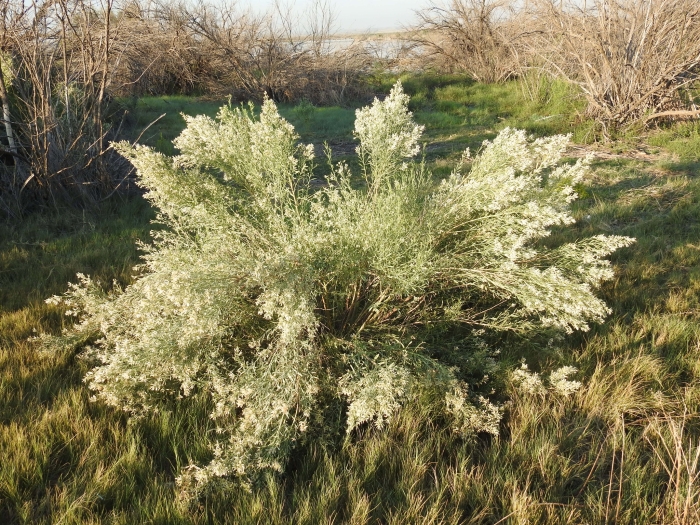Emory’s Baccharis
(Baccharis salicina)
Emory’s Baccharis (Baccharis salicina)
/
/

bobnieman
CC BY 4.0
Image By:
bobnieman
Recorded By:
Copyright:
CC BY 4.0
Copyright Notice:
Photo by: bobnieman | License Type: CC BY 4.0 | License URL: http://creativecommons.org/licenses/by/4.0/ | Rights Holder: bobnieman | Publisher: iNaturalist | Date Created: 2019-09-07T07:24:06-07:00 |

























































Estimated Native Range
Summary
Baccharis salicina, commonly known as Emory’s Baccharis, is an evergreen shrub native to riparian areas, wetlands, and moist places in the Southwestern USA and Mexico. It can grow up to 13 feet (4 meters) in height and is characterized by its erect, branching stems. The leaves are oblong to oval, sometimes with serrated edges, and can be up to 2.8 inches (7 centimeters) long. Baccharis salicina is dioecious, meaning individual plants are either male or female. The plant produces flower heads that are distinct between the sexes, with females producing achenes topped with a tuft of white bristles (pappus) for wind dispersal.
This shrub is valued for its adaptability to wet environments and is often used for erosion control and habitat restoration. It thrives in full sun to part shade and prefers medium to wet soils with good drainage. Mule Fat is low-maintenance and can be used in naturalistic plantings, riparian restoration projects, and as a wildlife attractant, particularly for pollinators. It is not known for any popular garden cultivars but is appreciated for its natural, wild appearance. Potential problems include root rot if the soil drainage is poor. It is not typically invasive outside its native range but can spread in suitable wetland conditions.CC BY-SA 4.0
This shrub is valued for its adaptability to wet environments and is often used for erosion control and habitat restoration. It thrives in full sun to part shade and prefers medium to wet soils with good drainage. Mule Fat is low-maintenance and can be used in naturalistic plantings, riparian restoration projects, and as a wildlife attractant, particularly for pollinators. It is not known for any popular garden cultivars but is appreciated for its natural, wild appearance. Potential problems include root rot if the soil drainage is poor. It is not typically invasive outside its native range but can spread in suitable wetland conditions.CC BY-SA 4.0
Plant Description
- Plant Type: Shrubs
- Height: 6-12 feet
- Width: 3-9 feet
- Growth Rate: Rapid
- Flower Color: N/A
- Flowering Season: Spring, Fall
- Leaf Retention: Evergreen
Growth Requirements
- Sun: Full Sun, Part Shade
- Water: Medium
- Drainage: Fast, Medium
Common Uses
Bee Garden, Bird Garden, Butterfly Garden, Drought Tolerant, Erosion Control, Fragrant, Low Maintenance
Natural Habitat
native to riparian areas, wetlands, and moist places in the Southwestern USA and Mexico
Other Names
Common Names: Willow Baccharis , Great Plains Falsewillow , Willow-Baccharis
Scientific Names: Baccharis salicina , Baccharis emoryi , Baccharis kraussei
GBIF Accepted Name: Baccharis salicina Torr. & A.Gray